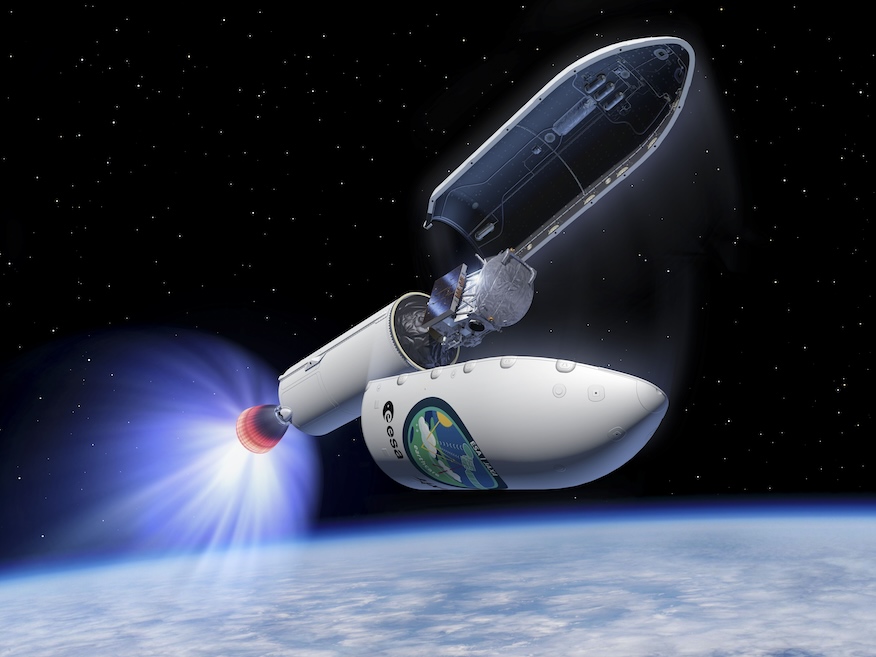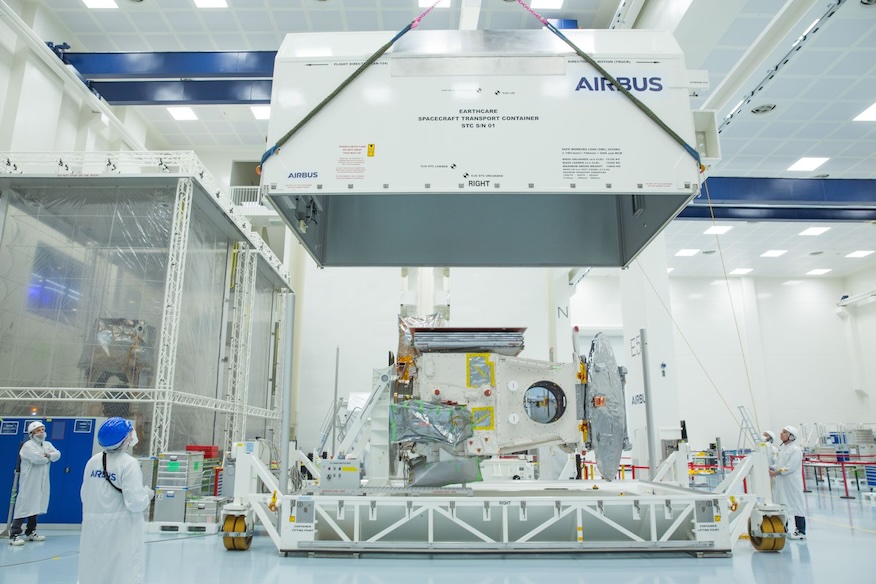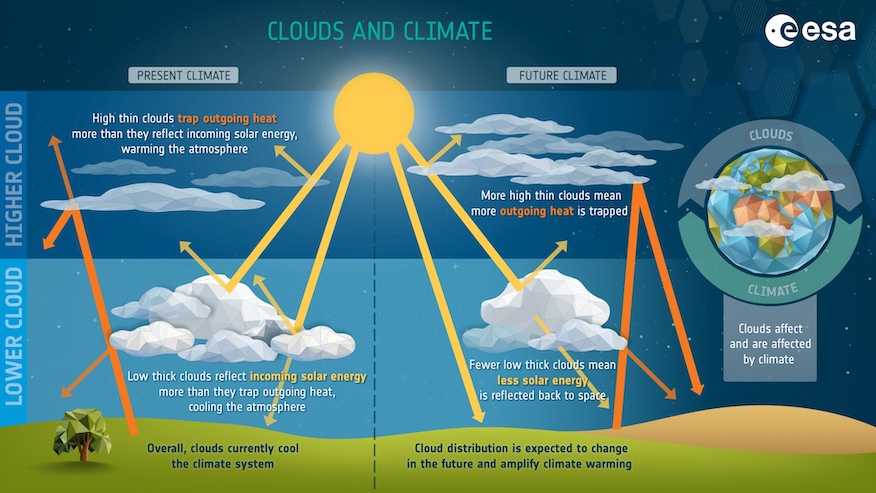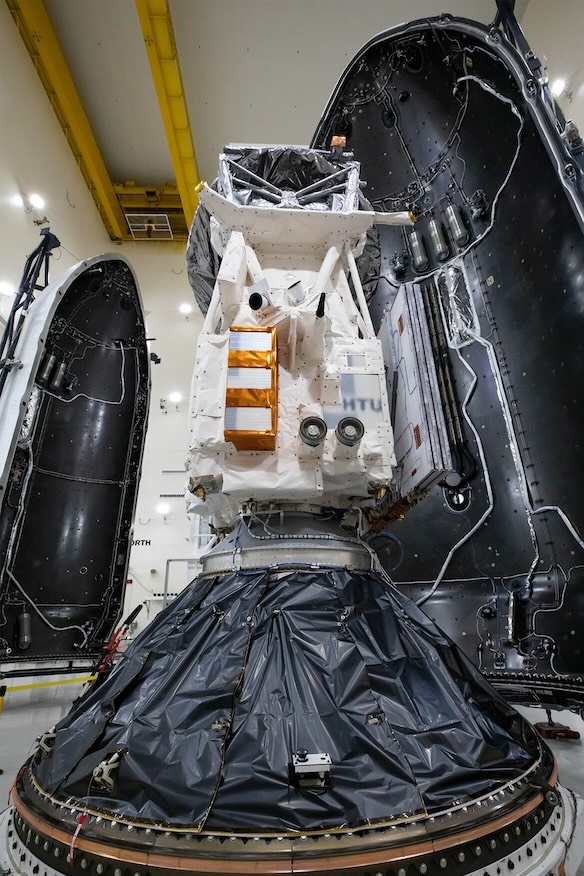
The European Space Agency is preparing to launch its latest Earth observing satellite, designed to better understand the climate. The Earth Cloud Aerosol and Radiation Explorer (EarthCARE) has four instruments which will study clouds and aerosols around the Earth “to improve the accuracy of climate models and support numerical weather prediction.”
ESA’s spacecraft will launch onboard a SpaceX Falcon 9 rocket from Space Launch Complex 4 East (SLC-4E) at Vandenberg Space Force Base. Liftoff is set for 3:20 p.m. PDT (6:20 p.m. EDT, 2220 UTC).
Spaceflight Now will have live coverage beginning about 30 minutes prior to liftoff.
[embedded content]
The Falcon 9 first stage booster supporting this mission, tail number B1081 in the SpaceX fleet, will launch for a seventh time. It previously launched Crew-7; SpaceX’s 29th Commercial Resupply Services mission (CRS-29); NASA’s Plankton, Aerosol, Cloud, ocean Ecosystem (PACE); the Transporter-10 rideshare mission; and two Starlink flights (6-34 and 8-1).
A little less than eight minutes after liftoff, B1081 will return to VSFB to touchdown at Landing Zone 4 (LZ-4). This will be the 19th landing at LZ-4 and the 314th booster landing to date.

Originally, the spacecraft was set to launch on a Russian Soyuz rocket. ESA announced a launch agreement with Arianespace in Oct. 2019 and noted a launch period that opened in June 2022 from the Guiana Space Center in French Guiana. However, following Russia’s invasion of Ukraine in February 2022, ESA Director General Josef Aschbacher announced in Oct. 2022 that EarthCARE would launch on Europe’s Vega-C rocket.
Plans shifted again when a static fire test on the path to Vega-C’s return-to-flight campaign sidelined that rocket until likely late 2024. That caused ESA to once again change plans and the mission was then assigned to SpaceX’s Falcon 9 rocket.
Europe’s loss of the Soyuz and lack of its own launchers put multiple other spacecraft on similar paths to EarthCARE. SpaceX has previously been tapped to launch Euclid in 2023, two Galileo missions (the first of which launched in late April) and Hera, which will launch in Oct. 2024.
Clouds and aerosols
The goals of the EarthCARE spacecraft bear some resemblance to NASA’s PACE spacecraft, which launched earlier this year using the same Falcon 9 booster. Both satellites are designed to increase the understanding around cloud formation and the role of the atmosphere in the overall climate.
EarthCARE is also a joint effort between ESA and the Japanese Aerospace Exploration Agency (JAXA), which provided one of the spacecraft’s four main instruments. In keeping with JAXA tradition, the satellite has a Japanese nickname: Hakuryu (White Dragon in Japanese).
#EarthCARE is launching soon!
Did you know that according to @jaxa_en tradition, satellites are also given nicknames in addition to their ‘official’ names. The nickname chosen for EarthCARE is ‘Hakuryu’ or ‘White Dragon’ in Japanese.The name ‘Hakuryu’ embodies the distinctive… pic.twitter.com/RLFNWDmK4e
— ESA Earth Observation (@ESA_EO) May 27, 2024
The spacecraft weighs about 2,200 kg (4,850 lbs.) and has a total length of about 17.2 m (56.4 ft.). It will be deployed to a sun-synchronous Earth orbit at 393 km in altitude and a 97.05° inclination. It’s designed to fully cover the Earth every 25 days and has an anticipated mission lifespan of at least three years (including a six-month commissioning period).
JAXA’s contribution is the Cloud Profiling Radar instrument as well as data processing for the instrument while it’s on orbit. The CPR is one of two active instruments on EarthCARE, along with the Atmospheric Lidar.
The CPR is a Doppler-capable radar, featuring a 2.5 m (8.2 ft.) antenna, which is able to peer through light precipitation and clouds “providing detailed insights into their vertical structure and velocity, particle size distribution and water content,” according to ESA.

The Atmospheric Lidar is a half-tonne instrument that uses about 500 watts to generate an ultraviolet wavelength laser beam. In concert with the CPR and EarthCARE’s Multispectral Imager, it can “derive cloud top height and aerosol physical properties, as well as classification of the various atmospheric components.”
The two passive instruments on the spacecraft are the Multispectral Imager and the Broadband Radiometer. The MI is designed to gather images with a 500 m (1640.4 ft.) resolution over a 150 km (93.2 mi.) swath.
The imager also features seven channels: visible, near-infrared, two shortwave infrared and three thermal-infrared.
“These images provide context to help interpret the measurements made by EarthCARE’s two active instruments, the lidar and the radar, that collect information only from a thin curtain under the satellite, and to extend that information into 3D scenes,” ESA said.
Finally, the Broadband Radiometer “provides accurate measurements of the reflected solar and emitted thermal radiation, co-located with the views from the cloud profiling radar and the atmospheric lidar.” To do this, it uses three telescopes (forward-looking, backward-looking and nadir) “to derive the top-of-the-atmosphere fluxes over a wide wavelength band.”

- SEO Powered Content & PR Distribution. Get Amplified Today.
- PlatoData.Network Vertical Generative Ai. Empower Yourself. Access Here.
- PlatoAiStream. Web3 Intelligence. Knowledge Amplified. Access Here.
- PlatoESG. Carbon, CleanTech, Energy, Environment, Solar, Waste Management. Access Here.
- PlatoHealth. Biotech and Clinical Trials Intelligence. Access Here.
- Source: https://spaceflightnow.com/2024/05/27/live-coverage-spacex-to-launch-esas-earthcare-on-a-falcon-9-launch-from-vandenberg-space-force-base/



